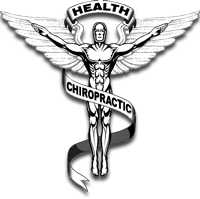Growth Pattern Distortions Related to Orthodontic Headgear Placement.
[space] “Headgear” is a familiar term in traditional orthodontics. The oft-dreaded phrase conjures up an image of a child’s face in straps wrapping around the head and attaching to a metal bar, terminating in braces and a mouth-piece.Simply put, traditional orthodontics is structured on the premise that there are too many teeth (or teeth that are too large) for the mouth. Protocol in traditional orthodontics recommends the extraction of four bicuspids to reduce crowding and make space so that teeth can then be pulled together and straightened. Braces and headgear are utilized to achieve this effect, creating posterior pressure on the remaining six front teeth, maxilla and cranium.
As everyone who went through a “brace face” period of adolescence knows all too well, the primary goal of traditional orthodontics is alleged to be an attractive smile with straight teeth, along with an improvement in facial aesthetics. What we don’t often hear about however, are aesthetic issues created by headgear.
Few dental patients understand the role headgear may play in the patterns of growth and development of the cranial facial structures, as well as the rest of the body. Let’s investigate a primary concern regarding headgear placement known as “Cranial Facial Distortion” (CFD).
CFD is a term that applies to the alteration in the growth and development of the facial structures and musculoskeletal system. Dentists have termed CFD growth distortion patterns related to the placement of head-gear as the “Headgear Effect” or HGE.
HGE describes the downward and backward growth of the oral facial structures. The forces applied when using head-gear restrict or distort the growth patterns of the upper jaw and result in the following:
- Arrestment of the normal growth pattern
- Restriction of the arch width of the upper jaw
- Inhibition of proper growth of the cranial facial structures
Growth and advancement of the lower jaw is often restricted as well, resulting in a narrowing and elongation of the face.
S.O.T. (Sacro-Occipital Technique) uses a system of categories and indicators to systematically reduce the stresses, reactions and compensations that contribute to and worsen effects of HGE. The imbalanced forces on the cranium and mandible can be addressed using S.O.T. to lessen the imbalance and to allow the system to undistort, stabilize and destimulate the whole body so that it will heal.
[space]How might we address these issues? Read here for more info addressing the Headgear Effect»
[space]At Wholistic Chiropractic, we are happy to address any concerns you may have. Call for an appointment and find out what we can do for you.
[space]In Health and Happiness,
Dr. Richard Gerardo
D.C., C.S.C.P., D.A.C.B.N.
[space] [space size=”” line=”yes” style=”solid”]
